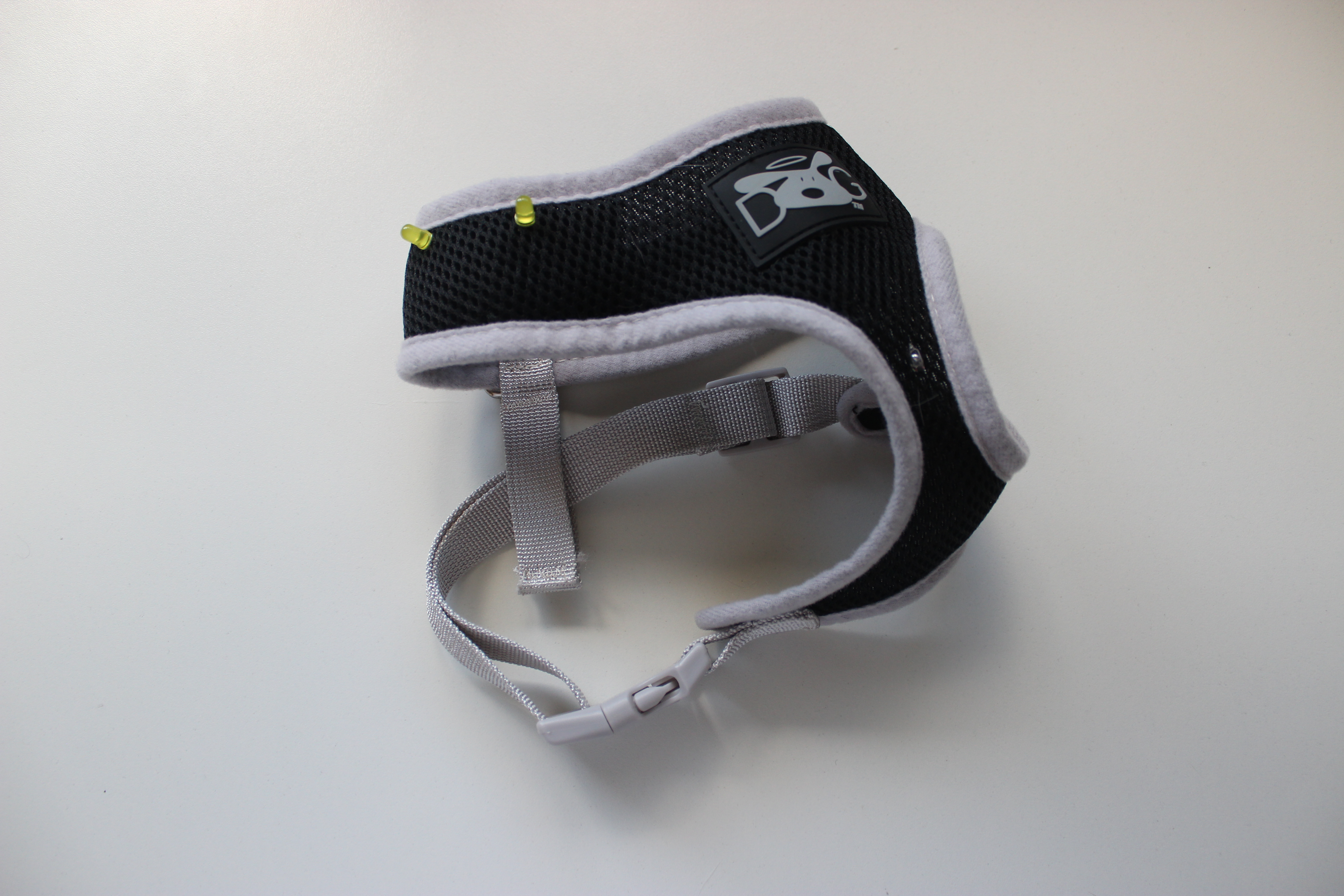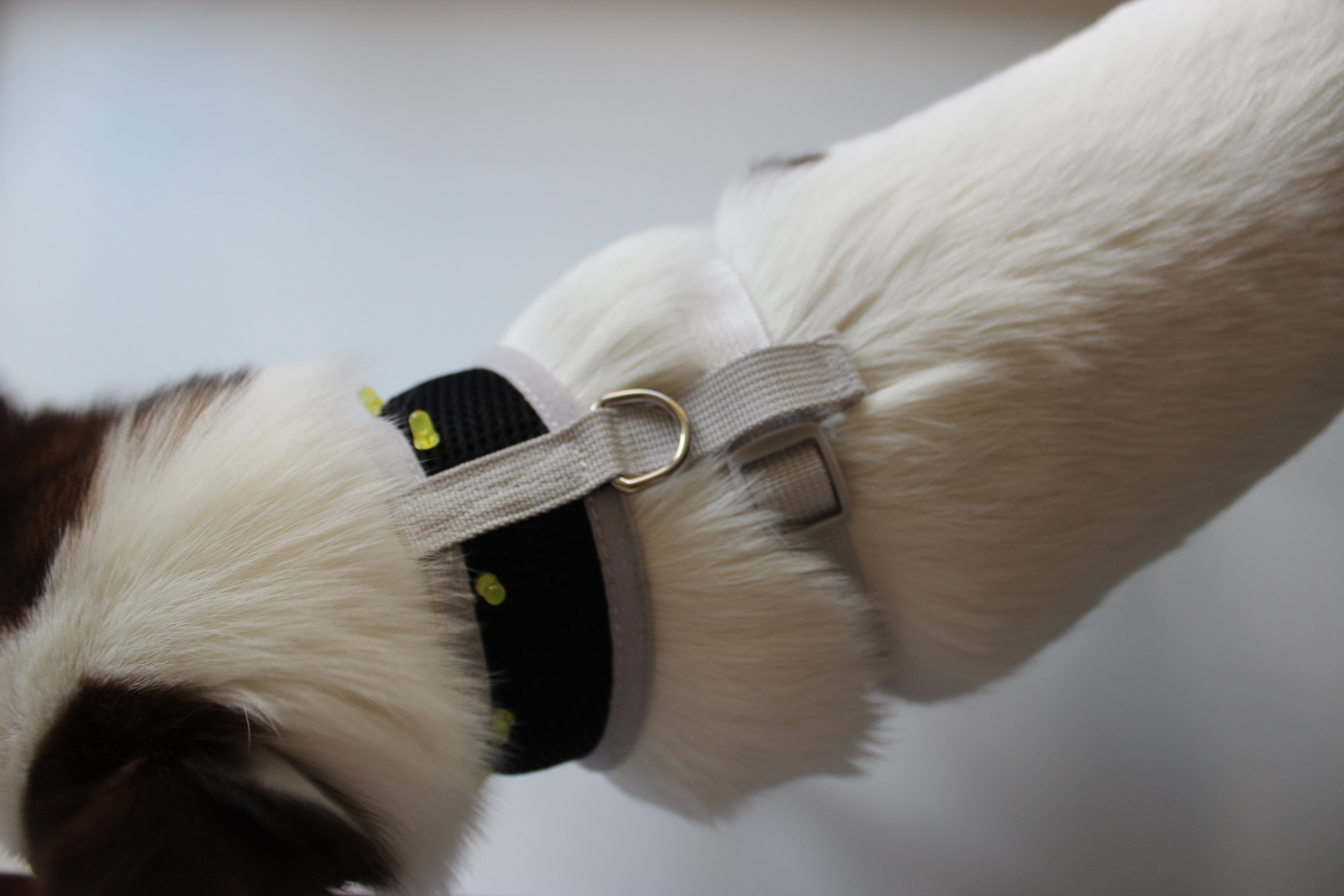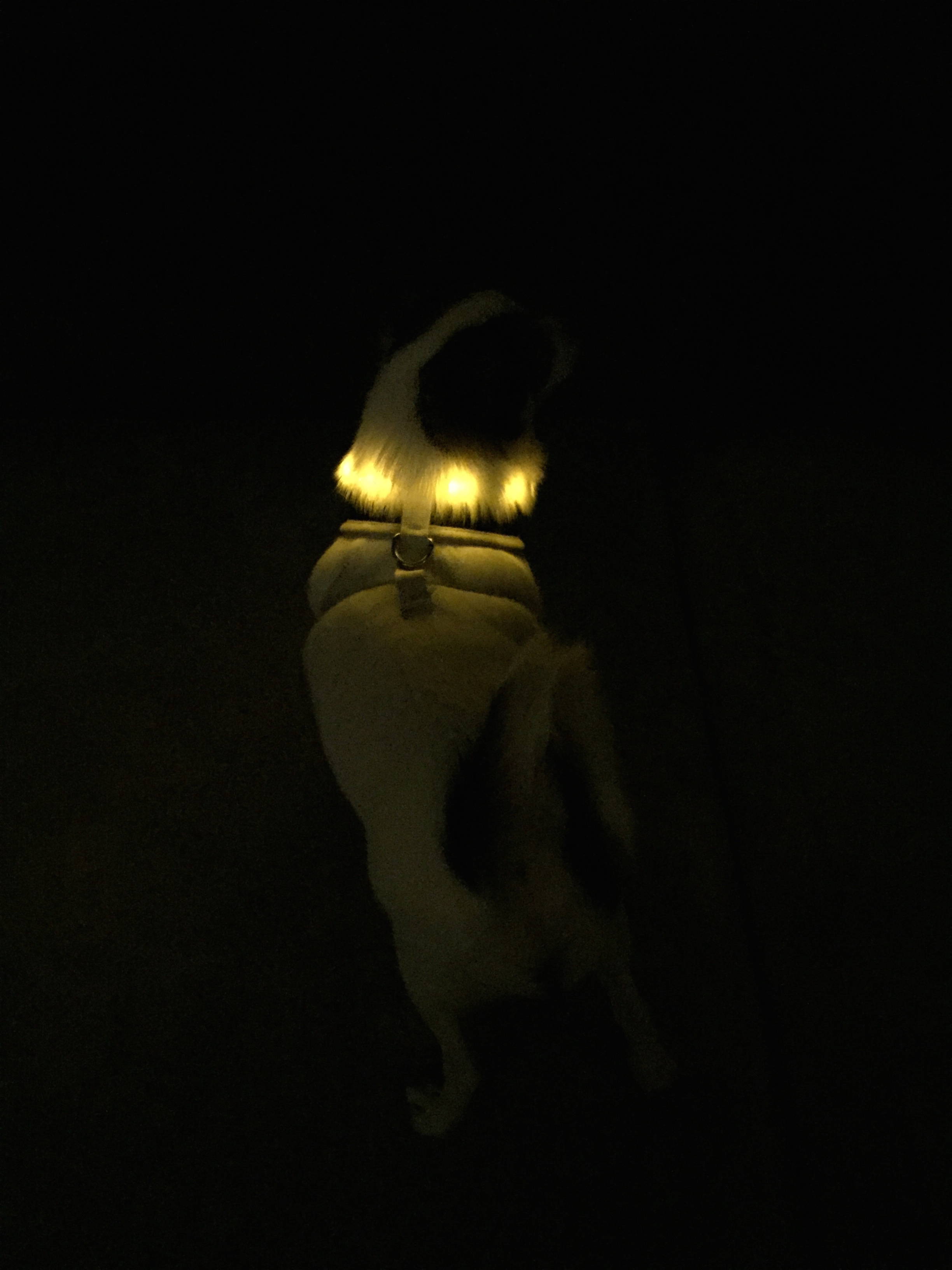A body interface product, which incorporated circuits into a wearable design. This project was inspired by the safety harnesses that cyclists wear at night to make them more visible to drivers. As such, I designed a dog harness that incorporated strips of yellow LED’s that were connected via conductive thread to a 5V flat cell battery.
Roles
Ideation, Prototyping
Materials Used
Dog harness, Conductive thread, Tiny LED lights, Mercury tilt sensor, 5V Battery, Sewing needle, Felt
Rationale
I chose a dog harness because, as a dog owner, there are many instances at night when I am walking my dog and I find that he is difficult to see sometimes when off leash because he is rather small dog. Thus, I wanted to make the LED strips more visible to humans. While I initially chose to use a light sensor, I ended up settling for a tilt sensor that was positioned at a near ninety degree angle. The purpose behind this was to interrupt the circuit so that the LEDs would shine intermittently and flash on and off when the dog wearing the harness was moving around. This allowed the dog harness to be easier to see than if I just used a static light.

In order to accomplish this project, I needed to learn first how to make wearable circuits. During my initial tests I found that because I was using conductive thread, it was relatively easy to accidentally create loose connections between LED strips that resulted in broken circuits. As such, I had to take extra care to ensure it was built properly. Using conductive thread, I connected the LEDs and battery together. In order to not short circuit the harness, I painted the conductive thread with clear nail polish that was tied to the LEDs so that the thread wouldn't fray and so that the positive side and negative side would not accidentally touch.


